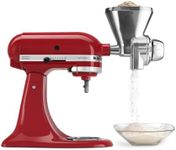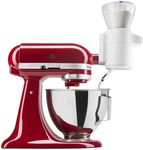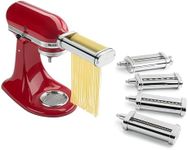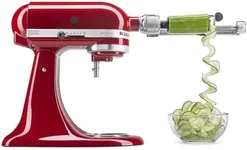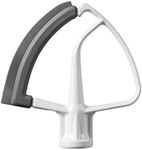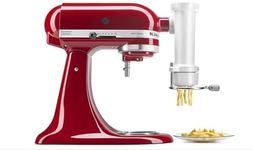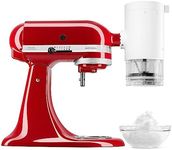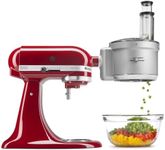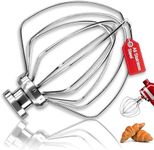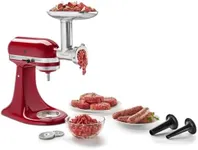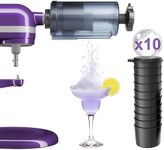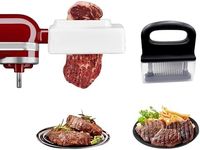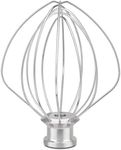Buying Guide for the Best Kitchenaid Attachments
When it comes to enhancing your KitchenAid stand mixer, choosing the right attachments can significantly expand its functionality and make your cooking and baking tasks easier and more enjoyable. The key to selecting the best attachments is understanding your cooking needs and how each attachment can help you achieve your culinary goals. Here are some key specifications to consider when choosing KitchenAid attachments.Attachment TypeAttachment type refers to the specific function the attachment is designed to perform, such as slicing, grinding, or pasta making. This is important because it determines what additional tasks your mixer can handle. Common types include food processors, pasta rollers, meat grinders, and ice cream makers. To choose the right one, think about the types of dishes you frequently prepare. If you love making fresh pasta, a pasta roller and cutter set would be ideal. If you often make burgers or sausages, a meat grinder would be more suitable.
CompatibilityCompatibility refers to whether the attachment will fit and work with your specific model of KitchenAid mixer. This is crucial because not all attachments are universal. KitchenAid mixers come in different sizes and models, and some attachments are designed to fit only certain models. To ensure compatibility, check the product description or packaging for a list of compatible mixer models. If you have an older or less common model, double-checking compatibility can save you from purchasing an attachment that won't fit.
MaterialThe material of the attachment affects its durability, performance, and ease of cleaning. Common materials include stainless steel, plastic, and aluminum. Stainless steel attachments are generally more durable and resistant to rust, making them ideal for heavy-duty tasks like grinding meat. Plastic attachments are lighter and often easier to handle but may not be as durable. Aluminum attachments strike a balance between weight and durability. Consider how often you will use the attachment and for what purposes to determine the best material for your needs.
Ease of UseEase of use refers to how simple it is to attach, operate, and clean the attachment. This is important because an attachment that is difficult to use can be frustrating and may end up sitting unused. Look for attachments with clear instructions and minimal assembly required. Features like dishwasher-safe parts can also make cleaning easier. If you are new to using attachments, starting with one that is known for its user-friendly design can make the experience more enjoyable.
VersatilityVersatility refers to the range of tasks an attachment can perform. Some attachments are single-purpose, while others can handle multiple functions. For example, a food processor attachment might come with different blades for slicing, dicing, and shredding. Versatile attachments can save space and money by reducing the need for multiple single-purpose tools. If you have limited storage space or prefer multi-functional tools, look for attachments that offer multiple uses.
PerformancePerformance refers to how well the attachment performs its intended task. This is important because a high-performing attachment can make your cooking tasks quicker and more efficient. Performance can be influenced by factors like motor power, blade sharpness, and design. Reading reviews and ratings from other users can give you an idea of an attachment's performance. If you frequently prepare large quantities of food, choosing a high-performance attachment can save you time and effort.
